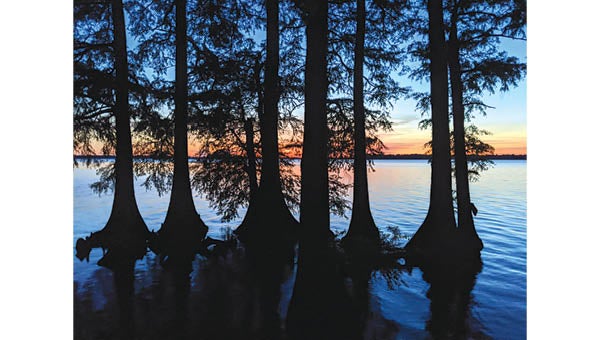Reelfoot Lake and its history of terrorism
Published 1:00 pm Monday, January 16, 2023
|
Getting your Trinity Audio player ready...
|
The next time you go fishing or boating, contemplate this fact: Use of a lake was once the cause of a violent chapter in Tennessee history.
It happened more than a century ago, on what was Tennessee’s only natural lake. During the New Madrid Earthquakes of 1811-1812, water overflowed the banks of the Mississippi River and inundated present-day Lake and Obion counties. Much of the water eventually receded, but a lot of it stayed, forming a body of water that became known as Reelfoot Lake.
Settlers began moving into northwest Tennessee after the Chickasaw Indians were forced out in 1818. Many of these settlers found they could make a good living as fishermen.
However, in 1908 the West Tennessee Land Company bought Reelfoot Lake’s shoreline and declared its intention to close the lake to fishing.
The people who made their living fishing felt threatened. One of them, Tom Johnson of the Obion County community of Hornbeak, was quoted by the Union City newspaper as saying:
“[God] saw that we couldn’t make a livin’ farmin’, so he ordered an earthquake, an’ the earthquake left a big hole. Next he filled the hole with watah an’ put fish in it. Then he knew we could make a livin’ between farmin’ and fishin’. But along comes these rich men who don’t have to make no livin’, an’ they tell us all that we must not fish in the lake any mo’, cause they owns the lake an’ the fish God put theah foh us. It jus’ naturally ain’t right.”
At the time, there was a rebellion in southern Kentucky between tobacco farmers and the American Tobacco Company. As part of that event, many farmers donned black sheets and made night attacks on tobacco company property as well as on farmers who were siding with it. They became known as “night riders,” and although they were probably inspired by the original Ku Klux Klan, they were not officially connected to it.
Many of the fishermen and their friends began making night raids of their own against the West Tennessee Land Company. The wave of terrorism went on for about seven months and, as so often happens with lawlessness, soon became an instrument of vengeance against people who had nothing to do with the West Tennessee Land Company. Crops were burned; docks were burned; men and women were taken from their homes and beaten.
The nightriders were also known to turn their anger toward African-Americans, or toward young men who refused to join their number.
Violence peaked in October 1908. On the third of that month, night riders murdered an African-American farmer named David Walker, along with his entire family, because he allegedly “swore at a white woman.”
Sixteen days later, two attorneys representing the land company were taken from a hotel near Reelfoot Lake. One of them, Quenton Rankin, was hanged from a tree and shot. The other, R.G. Taylor, escaped into the swamp amid a storm of bullets and was presumed dead. He survived by hiding under a cypress log for 24 hours.
News of the massacre of David Walker’s family hardly made the news in Tennessee — a reflection of the times. However, the murder of Quenton Rankin and near-murder of R.G. Taylor was reported atop the front page. Tennessee Governor Malcolm Patterson called out the National Guard to restore order. Working with law enforcement officials as well as hundreds of volunteers, the guard rounded up about 50 suspects.
In January 1909, a jury found eight men guilty and sentenced six of the eight to death. The verdict and the sentence were, at the time, hailed as a triumph of law and order. However, the Tennessee Supreme Court overturned all the convictions because of the way the judge chose members of the jury. They were later retried, but none did prison time for the Rankin’s murder.
The night rider era was horrible in every way, but did result in an increased public awareness of the public’s right to use lakes. In 1914, the state of Tennessee purchased Reelfoot Lake and much of its shoreline. A law was passed declaring the lake public domain, which means people can fish there, regardless of who owns the land around it.
In the 1920s, Tennessee Governor Austin Peay proposed, and the legislature agreed, to purchase thousands of acres of the shoreline and had it turned into Tennessee’s first state park. One of Peay’s last acts as governor, before his untimely death in October 1927, was negotiating over the purchase of the land around Reelfoot Lake.
Author’s note: There are several books about the events discussed in this column — among them Paul Vanderwood’s Night Riders of Reelfoot Lake and Shirley Moore’s Reelfoot Lake: A Nightrider’s Legacy.






